The Fisherman and the Net: Geometric Symbolism in the Gospel of John (I of II)
At this juncture a word must be said about some astronomical events and progressions that were at work around the time of Christ which played some role in the formulation of the interpretation of the life and teachings of Jesus and in particular his association with the Zodiac sign of Pisces, or the “fish sign”. Specifically here we’re referring to the progression of the equinoxes, within which the timeframe of Jesus’s birth takes on significant importance.
First and foremost it must be recognized that astronomy, theology and philosophy were very intertwined disciplines in antiquity. This tradition can be seen across all ancient, early civilizations (Sumer-Babylon, Mesoamerican cultures, Indo-Aryan peoples, the Persians, etc.) whose reliance on the stars and an understanding of the passage of seasons was a matter of life and death and cultural and social survival, rather than a simple scientific enterprise. To know astronomy was to know God to the peoples of antiquity and this was reflected in its incorporation into philosophic, mystic and theological disciplines in antiquity across cultures across the globe.
Despite some basic astronomical ignorance of the ancients – like for example that the Earth revolves around the Sun rather than the other way around – the ancients did show, particular in the West, a very solid understanding of not only the dates of the equinoxes (the two times a year when the length of the day and night are equivalent) but also a good understanding of what is called the precession of the equinoxes, an astronomical phenomenon caused by the very slow movement of the shift of the Earth’s axis, akin to the bobbling of a top, that takes approximately 26,000 years, causing the falling of the dates of the equinoxes to move ever so slightly westward along the ecliptic, the opposite direction that the sun moved across the same path. The ancients didn’t of course understand why this occurred completely, but they did understand that these equinoxes moved ever so slightly in a regressive path across the ecliptic, through the constellations of the Zodiac, and this progression like all astronomical phenomena had great significance to the sages in antiquity.[1]
So what the ancients knew quite clearly was that, according to their geocentric astronomical viewpoint, the Earth traveled around the Sun every 365 days, that twice a year the day and night were of equal length, i.e. the equinoxes (from the Latin words for equal, “aequus”, and night, “nox”), and that every 26,000 years or so there was a shift of the equinoxes to a (preceding) zodiac sign, a transition from Aries to Pisces occurring at approximately 100 BCE, just around the time of the birth of Christ and shedding some light on the visit of the Magi priests from the East at the time of his birth.
The precession of the equinoxes follows the following progression, timing that was clearly well understood during the second half of the first millennium BCE (and perhaps understood much earlier although the evidence for this is unclear and scant at best) with the astronomical discovery being attributed to Hipparchus the Greek mathematician and astronomer in the 2nd century BCE.[2]
- Age of Taurus (Bull) – 4500 BCE – 2000 BCE
- Age of Aries (Ram) – 2000 BCE – 100 BCE
- Age of Pisces (Fish) – 100 BCE – 2700 CE
- Age of Aquarius (Water-bearer) – 2700 CE ff.
Having established the astronomical significance of the transition into Pisces in the Zodiac at around the time of Christ it is no surprise that we find stories relating Jesus to fish in the literature surrounding his life and teaching. In particular we have two such miraculous stories relating to Jesus and the catching of fish in the Gospels, the first of which can be found in the Gospel of Luke where the miraculous catching of fish is attributed to the joining of Peter, James and John as disciples of Jesus (Luke5:1-11) and the second story comes toward the end of the Gospel of John after Jesus is killed[3].
As already mentioned the gematria values for “Jesus” and “Christos”, 888 and 1480 respectively were not only related to the magic square of the Sun being factors of the special number 74, which along with 111 and 666 are special numeric characteristics of the magic square of the Sun, but also relate back to the tradition of the Temple at Delphi as the geometric mean between 888 and 1480 is equal to 769, which is the gematria value of the Greek word “Pythios”, the name for Apollo at the Temple of Delphi. Perhaps the most mysterious and perplexing example of geometric symbology via gematria comes from the story of Jesus and the casting of the net and catching of 153 fish in the Gospel of John, the Gospel that shows the most Greek philosophic influence (Logos, etc.).
In the Gospel of John story, Peter and 6 other disciples are in a boat fishing all night in the Sea of Galilee and have caught nothing. In the morning, Jesus (unrecognized at first) asks them from the shore if they have caught anything to which they replied no. He then instructs them to cast their net to the right side of the boat after which they catch a large number (haul) of fish and after which they recognize the man to be Jesus. Peter then puts on an outer garment (ἐπενδύτην), jumps from the boat (“casts himself into the sea”) and swims ashore to meet him, while the rest of the disciples came ashore to find Jesus and a fire of coals with fish and bread waiting for them. Jesus then instructs them to bring their net full of fish which they find has 153 fish in it and despite the great load, the net itself had not been broken. The disciples then eat with Jesus on the shore, it having been the third time that Jesus had revealed himself after he had been crucified.[4]
Keeping to the geometric and mathematical symbolism of the selection of the number 153, we also find references to a very similar story regarding the calculation of fish in the mythical narrative surrounding the life of Pythagoras as reported by Iamblichus as well as Porphyry, both Neo-Platonists philosophers writing some few centuries after Christ but presumably drawing on much older sources, and both clearly showing significant influence by Pythagorean teachings. The story is related by Iamblichus, the earlier of the two authors from the third/fourth century CE, below:
AT that time also, when he was journeying from Sybaris to Crotona, he met near the shore with some fishermen, who were then drawing their nets heavily laden with fishes from the deep, and told them he knew the exact number of the fish they had caught. But the fishermen promising they would perform whatever he should order them to do, if the event corresponded with his prediction, he ordered them, after they had accurately numbered the fish, to return them alive to the sea: and what is yet more wonderful, not one of the fish died while he stood on the shore, though they had been detained from the water a considerable time. Having therefore paid the fishermen the price of their fish, he departed for Crotona. But they everywhere divulged the fact, and having learnt his name from some children, they told it to all men.[5]
In this Pythagorean story/myth, which is most definitely associated with the miraculous powers attributed to Pythagoras and contributed to his fame there is no mention of the number of fish in the net, despite the attempt by later Biblical and esoteric historians to try and connect the two stories directly. What does seem rather odd however, is the narrative of the story and how similar it is to the account of Jesus and the miraculous catch of fish at the end of John. Whether or not the story is attributed to Jesus, and the geometric symbolism tied to and built off of the number 153 is constructed off of that myth/fable remains an unverifiable connection to say the least but the general parallels cannot be ignored, especially since the esoteric geometric symbology which can be constructed from the story itself, stemming from the specific number of fish that are called out as caught in the net that is cast from the boat of disciples, show signs of Pythagorean mathematical and symbology as we have come to understand Pythagorean cosmology and esoteria through antiquity as interpolated by later expositors of his doctrines, again such as Iamblichus and Porphyry, the Neo-Platonist philosophers who are contemporaneous with early Christian theological developments and who clearly held Pythagoras in such high esteem, viewed him as the father of Greek philosophy, and presumably had access to oral as well as written traditions about his life and teachings which are lost to us now.
One might legitimately ask why this number 153 has come to be understood as carrying such great mystical and symbolic meaning. Despite its very special properties as a number in and of itself (sum of the values 1-17 consistent with the sacred Pythagorean tetraktys triangular shape which followed a similar pattern albeit stopping at 4), and one which clearly shows evidence of knowledge of the latest mathematical developments in late Hellenic antiquity (Archimedes for example who presumably drew from earlier sources to establish the closest know fraction to the value of the square root of three which represents the length/height of the vesica piscis), one could easily right off the numeric value as simply a count of the number of the fish that were actually caught. For it is not too far-fetched a hypothesis to believe that the disciples, being fisherman themselves, were simply counting the number of fish that Jesus had so miraculously brought into their net.
But this does not explain the geometric symbology that can be crafted and developed from the story itself, starting with the number 153, designing a geometrical circular figure that contains seven same size circles which represents the seven disciples in the boat, each with a circumference of the gematria value of “Simon Peter”, the key figure in the story as 1925. These seven circles, each with a circumference of 1925 consistent with the circle representing Simon Peter of circumference 1925, reside within a larger circle which encompasses all seven circles representing the disciples which in turn symbolizes the boat, has a diameter of 1224, which is equivalent to the gematria value in Greek of both “fishes” and “the net”.
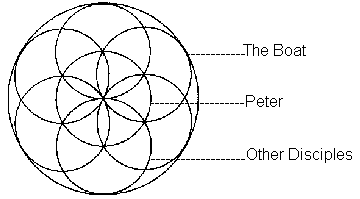
Figure 1: The geometry symbolism of Simon Peter and the disciples in the boat, where the circumference of the circle representing the disciples being equal to 1925 and the diameter of the circle of the boat being equivalent to 1224, the gematria value of “Fishes” and “The Net”.
At this point Jesus tells the disciples to recast their net to the right side of the boat, using the symbology of the net which has significant esoteric meaning in antiquity, having been quoted by Proclus as a metaphor for the manifestation of the material world which is covered by a net, or web of objects of the senses and mankind’s desire of the same, as well as by the Template of Delphi practitioners whose omphalos stone which formed important element to its divination ceremonies and was considered by some in the Delphic circles to be the center of the world in antiquity, was also covered by a net to effect the same symbolism of the world of name and form from which the individual soul must liberate itself from in order to ascend to the higher realms of spiritual illumination. The same symbology is used by the Vedic/Hindu tradition to describe the world of Maya, or illusion, which is also symbolized by a net which catches spiritual aspirants and from which they must escape to realize the true nature of reality and attain spiritual illumination and freedom from the bonds of the sensory, material world which is governed by desire.
In the miraculous fish story relayed in John, the disciples then cast the net to the right side of the boat, which following the gematria numeric symbology creates a circle just to the right of the circle of the boat which carries the disciples with the special properties of a vesica piscis being formed whose left outermost edge tangentially brushes up against the center of the circle of the boat (whose height of course is also the square root of 3 which is closely related to the 163 number value that connects the whole geometric symbol. This net that is case to the right of the boat that rests within the vesica piscis also carries with it special geometric properties as it can be filled with an oblong polygon whose corners align with each center side of the vesica piscis and whose top two corners line up with the top and bottom of the vesica piscis, forming an oblong square which, when cut into a four by four square, visually representing a net one might add, has the special mathematical properties of having its height equal to 1060 (the gematria value of Apollo – the height and width times the square root of 3) a perimeter equal to 2448 or 612 x 4, where each small square across each perimeter of the net is equal again to 153 (153×4 = 612).
Once the boat has been constructed with 7 circles of circumference 1925 (gematria value of “Simon Peter”) and the net has been created just to the right, adjoining to the circle of the boat via the vesica piscis with height of approximately 1060, and the net itself has been broken down into 4 by four squares, reflecting the visual representation of the net, whereby each square is 153 in width and the total perimeter of the square with the 16 inner squares having perimeter of 153x4x4 = 612×8 = 2448, double the gematria value of both “fishes” and “the net” in their Greek transliteration. The net itself in this geometric diagram is incidentally made up of two Pythagorean tetraktys appended to each other, one on top of the other, where the base of the triangle is 4, the next level is 3, the next two and the top 1 which of course is known to have very symbolic and esoteric meaning in the Pythagorean schools. The number 153 is reflected in this geometric construction as well as the total number of rhombuses (also referred to as an equilateral quadrilateral), including the outer rhombus itself has not only a width of 153, but also contains 17 rhombuses in total, again including the larger all encompassing rhombus within which all of the other rhombuses are housed – as also already pointed out, 153 is the sum of the numbers 1-17, the number of components in the geometric net.
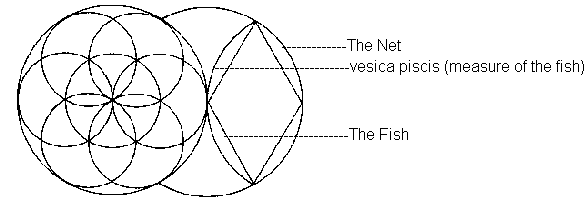
Figure 2: Geometric symbol representing the casting of the net to the right of the boat containing the seven disciples. The height of the vesica piscis being equal to 1060, and the perimeter of the net having a value of 2448, when divided into 16 equivalent squares (which is two inverted Pythagorean tetraktys on top of each other), each square is 153 in width, the number of fishes caught in the net.
The net itself in this geometric diagram can be broken down into two Pythagorean tetraktys appended to each other, one on top of the other, where the base of the triangle is 4, the next level is 3, the next two and the top 1 which of course is known to have very symbolic and esoteric meaning in the Pythagorean schools (see Figure below). The number 153 is reflected in this geometric construction as well as the total number of rhombuses (also referred to as an equilateral quadrilateral), including the outer rhombus itself has not only a width of 153, but also contains 17 rhombuses in total, again including the larger all-encompassing rhombus within which all of the other rhombuses are housed – as also already pointed out, 153 is the sum of the numbers 1-17, the number of components in the geometric net.
The next, and final level of geometric symbology that can be drawn out of the parable is can be constructed using the gematria value for the fisher’s coat which Peter places on himself before he leaps out of the boat to swim to Jesus on the shore. The gematria value for the transliteration of “The Fisher’s Coat” or “overcoat” in Greek is 1060, laying out the dimension for the height of the vesica piscis, whose width in turn is 612, the gematria value for “Zeus”. Its height in turn is closely correlated to the square root of 3, which we know is associated with 153 as well as determined by the closest known approximation for the square root of three at the time, or 265/153 as established by Archimedes some three centuries prior if not earlier. 1060 in turn is not only very close approximation for the gematria value for Apollo (1061) but also for the gematria value of “Pleroma” (1059), which conceptually plays a significant role in early Christian and Gnostic circles, is found in the New Testament and Gnostic treatises, and denotes the complete totality of existence. Inserted in this vesica piscis is also a representation of Simon Peter, again a circle with circumference of 1925 and a diameter of approximately 612, the gematria value of “Zeus” which is the width of the vesica piscis.
[1] The Zodiac is a circle of approximately 30 degree divisions of celestial longitude that are centered on the ecliptic, 12 divisions in all that are associated with the various animals and mythical figures with which we are familiar, starting with Aries and ending with Pisces. The calendar and Zodiac astronomical system is attributed to the Babylonians, more specifically the Chaldean people, who came to be known to the Greeks as synonymous with astronomy – for example the magi of the East in the New Testament which anticipated the birth of Christ based upon astronomical phenomena. The origins of the twelve signs of the zodiac which correspond to the twelve months of our Gregorian calendar can be found as far back as the first millennium BCE.
[2] Although the discovery of the precession of the equinoxes is attributed to the Greek astronomer Hipparchus (circa 190-120 BCE), whose work on precession was continued by Ptolemy, some scholars attribute this knowledge at least at a superficial level to the Babylonians and/or the Egyptian civilizations and priests prior to the Greeks. This precession is sometimes referred to as the Great Month, the precession through the entire Zodiac being referred to in this context as the Great Year.
[3] See http://en.wikipedia.org/wiki/Miraculous_catch_of_fish for a brief account of both of the miracle accounts.
[4] John 21:1-11. See http://biblehub.com/text/john/21-1.htm.
[5] Iamblichus, Life of Pythagoras Chapter VIII, translated by Thomas Taylor. London: J.M. Watkins 1818.

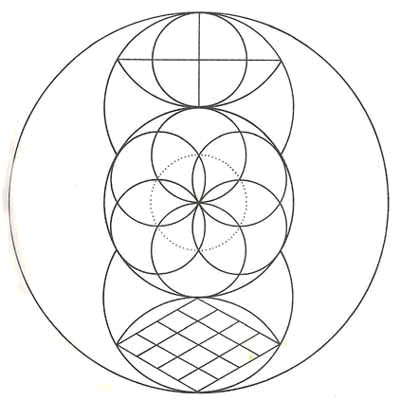
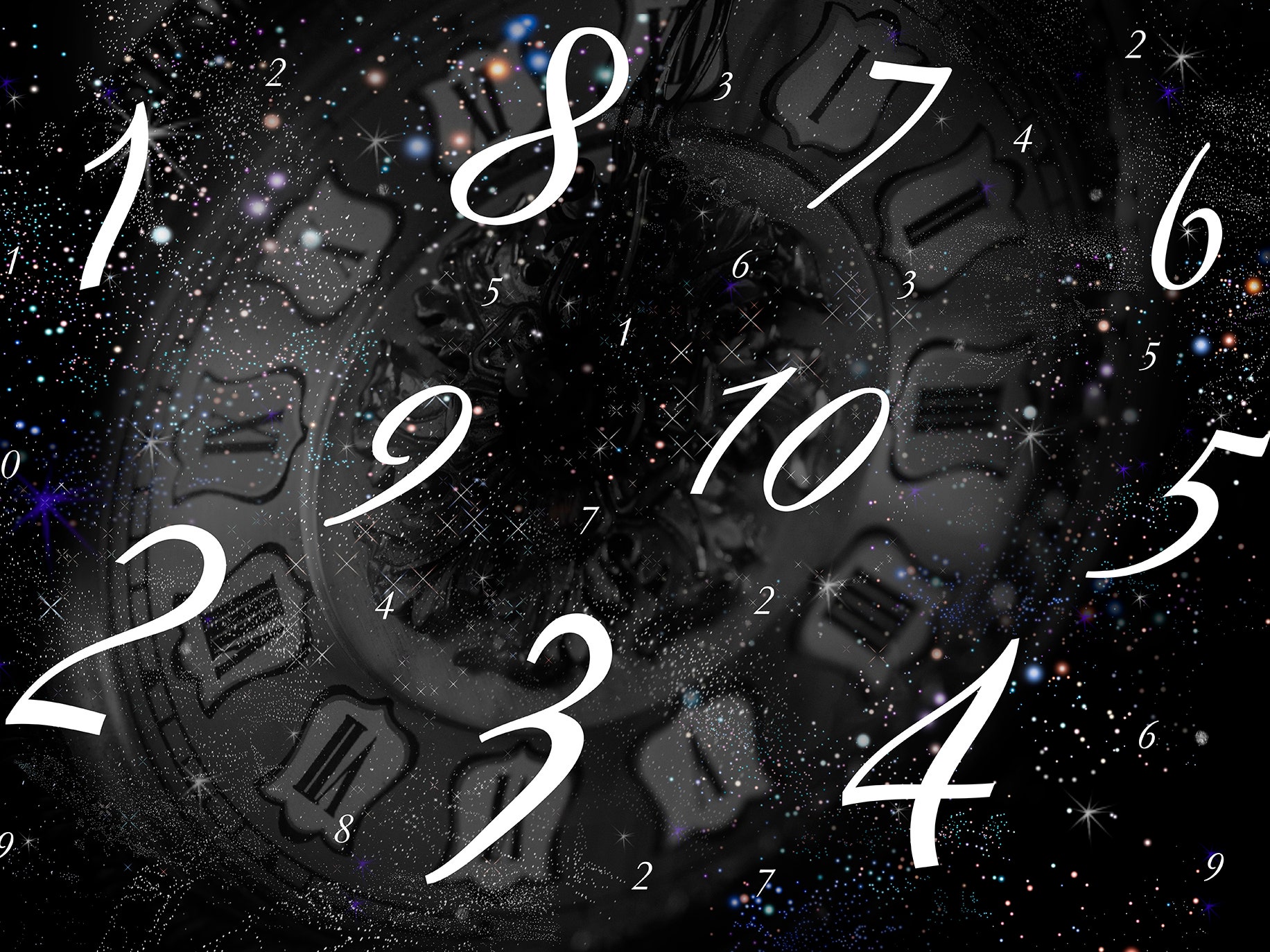
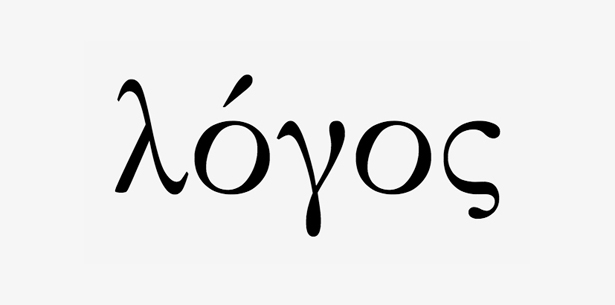
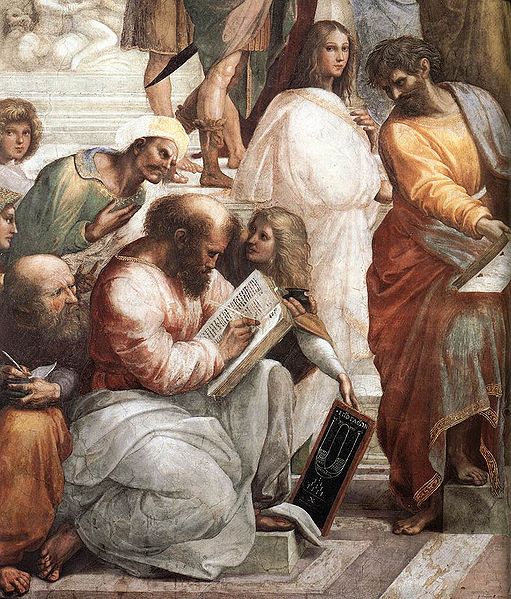
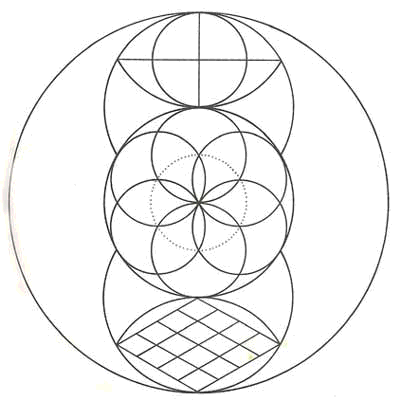
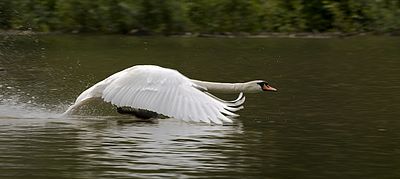
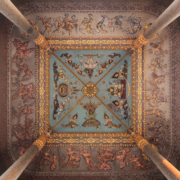

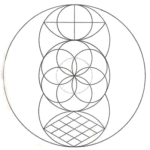
Trackbacks & Pingbacks
[…] See https://snowconesdiaries.com/2016/07/30/the-fisherman-and-the-net-geometric-symbolism-in-the-gospel-of-jo… and […]
Leave a Reply
Want to join the discussion?Feel free to contribute!